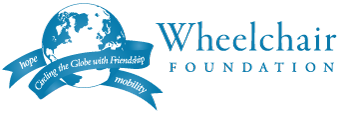PORT-AU-PRINCE, Haiti — “Don’t cut off my leg!” Fabienne Jean screamed repeatedly as she was carried through the gates of the General Hospital here after the earthquake. “I’m a dancer. My leg is my livelihood. Please, don’t take my leg.”
“It is a sad story,” Ms. Jean, 31, a slim, graceful woman who danced for the Haitian National Theater, said recently, massaging her bandaged stump. “But what can I do? I can’t kill myself because of this, so I have to learn to live with it.”
More than a month after the earthquake, thousands of new amputees are facing the stark reality of living with disabilities in a shattered country whose terrain and culture have never been hospitable to the disabled.
Some remain in hospital tents swarming with flies; others have moved to makeshift post-surgical centers; and those who healed quickly, like Ms. Jean, have been discharged to the streets, where they now live. All need continuing care in a nation with no rehabilitation hospital, few physical therapists, no central prosthesis factory since the quake and a skeletal supply of crutches, canes and wheelchairs gradually being reinforced by donations.
“The situation for newly disabled persons is very delicate,” said Michel Péan, Haiti’s secretary of state for the integration of the disabled. “They urgently need not only medical care but food and a place to live. Also, we cannot forget those disabled before the disaster who, because of their handicap, are having trouble getting access to humanitarian aid.”
Rough estimates of the number of new amputees are based on information from overburdened hospitals that did not keep good records of surgeries. The Haitian government believes that 6,000 to 8,000 people have lost limbs or digits. Handicap International estimates that 2,000 to 4,000 Haitians underwent amputations, and many thousands more suffered complicated fractures, some of which could turn into amputations if not managed well.
Dr. Péan, who is blind and serves in a relatively new post as government advocate for people with disabilities, said that Haiti’s disabled — some 8 percent of the population even before the quake — had long been treated as second-class citizens. But the government has recently taken legal steps to recognize their rights and opened offices to serve them in the countryside, he said.
Ideally, Dr. Péan said, post-earthquake reconstruction could provide an opportunity to make Port-au-Prince, Haiti’s capital, more accessible to people with disabilities and the impetus to create a national institute for rehabilitation.
For the moment, though, the urgent focus is on the uncertain present: making sure the thousands who underwent life-saving amputations have a future.
Handicap International, based in France, has been coordinating the postdisaster rehabilitation effort with CBM, a Germany-based Christian disability group, and with the Haitian government. Its volunteers — about five dozen therapists, nurses, technicians and community workers — have been providing postsurgical care and physical therapy at 12 hospitals here, and the organization is setting up a prosthetics workshop, too.
“We know that persons with injuries and disabilities are going through a difficult time right now, but they should not feel they’re alone,” said Aleema Shivji, an emergency response specialist with the group. “There are services available, and they’re increasing by the day.”
Recently, Caryn Brady, a physical therapist from Canada, made rounds through the sweltering postoperative tents outside the General Hospital. The patients there are being seen by such a revolving cast of international medical professionals, with charts so poorly kept that scribbled messages on bandaged stumps communicate the essentials: “See again on Feb. 23. Thanks. (Smiley face.)”
Bedside, Ms. Brady led Emmanuel Souverain, a university student whose right arm was amputated, through a series of exercises meant to prevent contractures and keep his muscles healthy for a prosthesis — although there is no plan yet to manufacture upper-body prosthetics.
Proceeding on to Mana Alexandre, 22, a double amputee in a white slip, Ms. Brady smiled when Ms. Alexandre showed off, bicycling her two leg stumps fiercely, a proud smile on her face. After more exercises, Ms. Alexandre moved, with the therapist’s guidance, into a wheelchair, but worried about how to get back into bed.
“Well,” her petite, dimple-faced mother, Evenie Belizaire, said, “I’ve been lifting you your whole life, with God’s help.”
